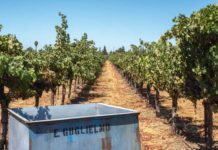Salzburg, Austria
– Visitors to this lovely city, bisected by the Salzach River,
with the picturesque Old City on the left bank designated a World
Heritage site by UNESCO in 1997, are usually in search of a couple
of specific things.
Salzburg, Austria – Visitors to this lovely city, bisected by the Salzach River, with the picturesque Old City on the left bank designated a World Heritage site by UNESCO in 1997, are usually in search of a couple of specific things. There are the two residences of the great composer Mozart (one of which is now a museum) and the locations used for the filming of the popular 1965 film “The Sound of Music” with Julie Andrews. Certainly the city’s tourist industry is geared towards funnelling tourists to each of these locations.
But for those with an interest in religion, there is much more to see in this ancient city of nearly 150,000 inhabitants. It is sometimes called “the Rome of the North” because Salzburg is packed with so many beautiful and historic churches.
The reason for the wealth of places of worship is not hard to understand. For almost 1,000 years the city was ruled by the powerful archbishops of Salzburg, the leading Catholic officials of the German-speaking world. They became princes of the Holy Roman Empire in 1278 and used their power with extreme intolerance, expelling the Jews and persecuting Protestants to such an extent that most migrated to Prussia.
Looming above the city and symbolizing the Roman Catholic Church’s power is Hohensalzburg Fortress, built in 1077 and greatly expanded during the following centuries. The city is also said to boast an amazing 144 churches, only one of which is not Roman Catholic.
Salzburg Dom (“Cathedral”) was originally built from 767 to 774, suffering several fires and subsequent rebuildings over ensuing centuries. The present building was constructed between 1614 and 1628 in the baroque style, similar to St. Peter’s Basilica in Rome. During World War II an air raid severely damaged the cathedral, causing its massive dome to collapse. Repairs were undertaken; the cathedral was finally reopened in 1959. Its marble facade dominates the plaza it faces, while inside, the light flooding through the windows of its massive cupola seems to emphasize the majesty of God and the hope of heaven.
Nearby is St. Peter’s Abbey Church, the present building dating from 1143, when its construction was completed on the site of an early monastery built in the seventh century. The church’s original romanesque architecture was much darker than it appears now because a cupola was added in the late 1700s.
Adjoining the church is St. Peter’s Cemetery, the oldest burial ground in Salzburg and final resting place of many prominent people, reportedly including the composers Mozart and Hayden. (This was also where the Von Trapps hid from their Nazi pursuers.) Hewn into the cliffs behind the cemetery are the Catacombs, caves used for burial dating from the earliest Christian era.
On University Square is the Collegiate Church, another large and beautiful church built between 1696 and 1707 with some unique altar paintings. Most of the university has been closed and moved to other cities, and this church now has only a large single ring of seats rather than the normal arrangement utilized in most churches.
St. Blaise’s Church, a 14th century gothic building modernized in 1749, was formerly the chapel of a hospital. When I visited it shortly after noon on a weekday I found a locked metal gate which kept visitors from entering its nave from the open narthex. But echoing from its dark interior was the inspiring sound of an organist practicing for a later service, making this a pleasant haven from the crowds of tourists found elsewhere in this crowded city.














